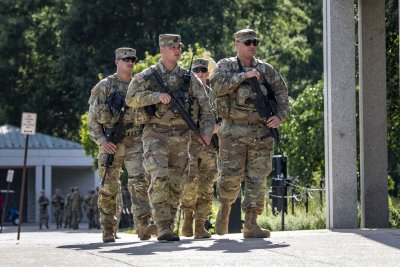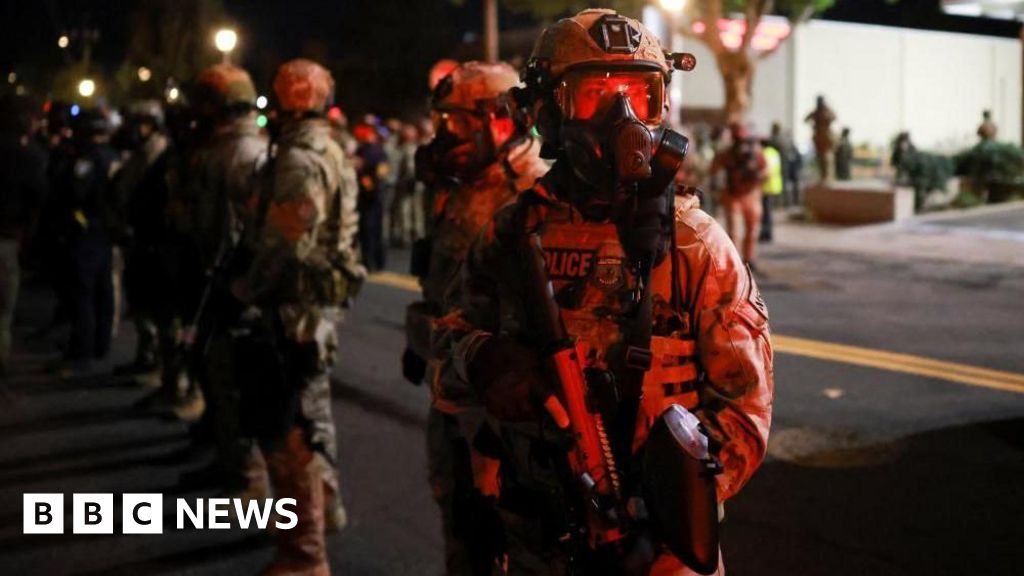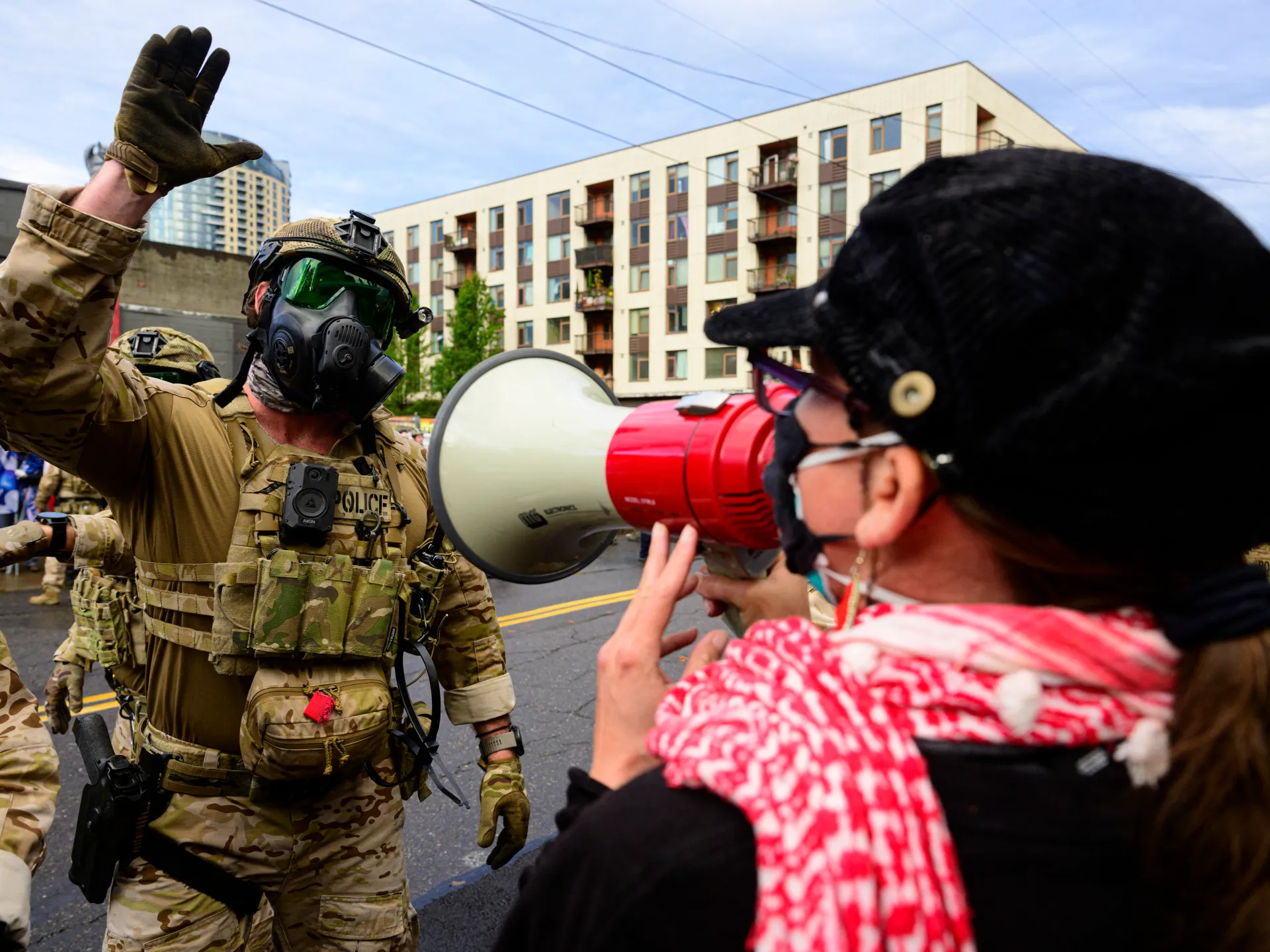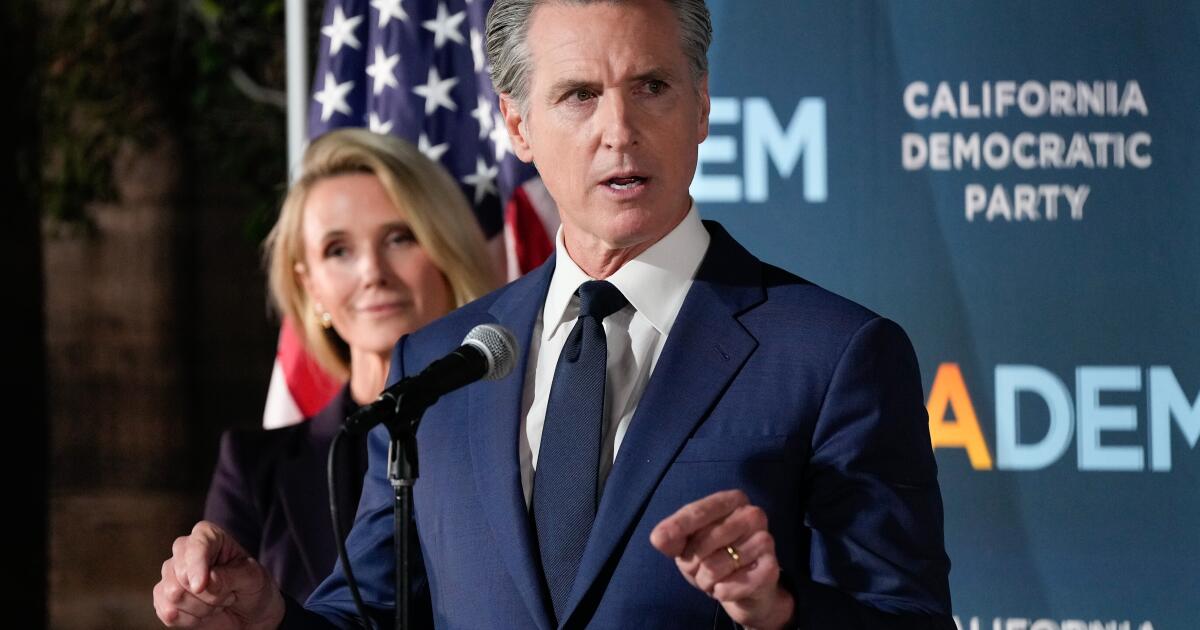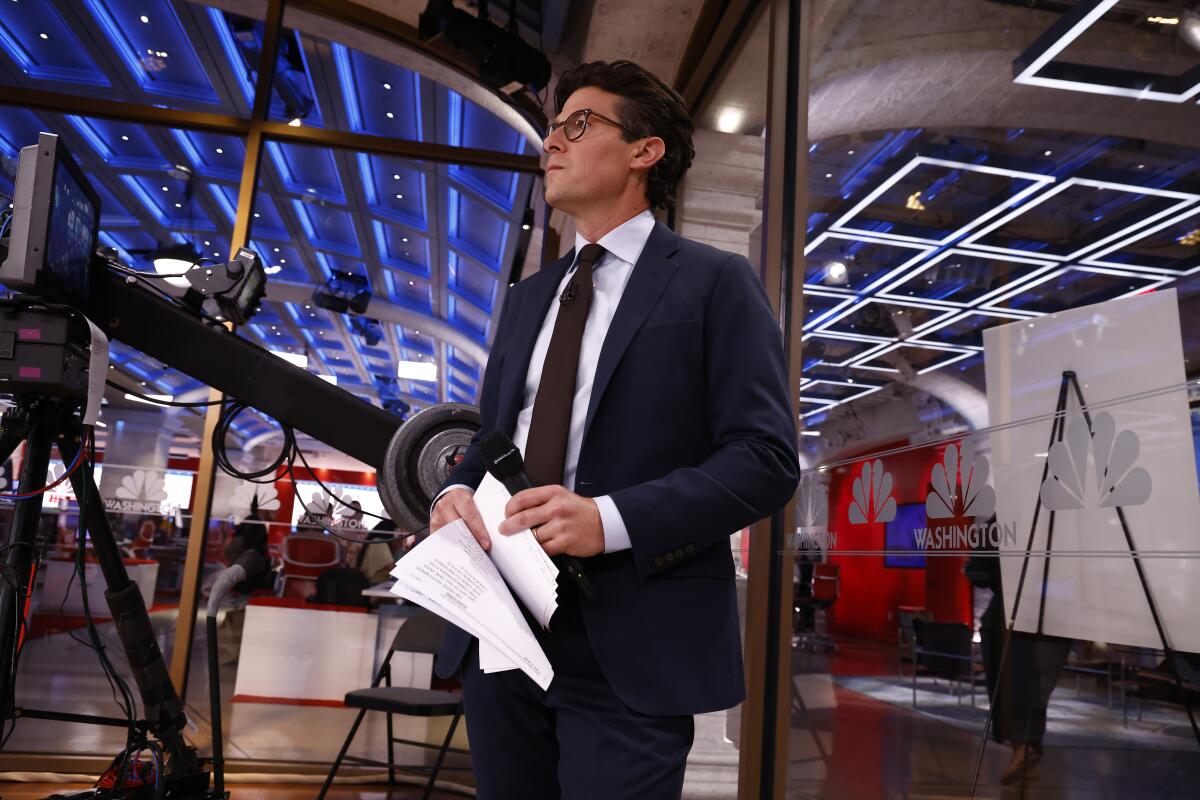California voters delivered a major victory for Democrats nationwide Tuesday — and possibly for Gov. Gavin Newsom’s political ambitions — by passing a redistricting plan that could help the party seize as many as five congressional seats in the 2026 midterm elections.
The ballot measure was seen as a searing denunciation of President Trump and his administration’s policies, which have included divisive immigration raids, steep tariffs, cuts to healthcare and a military occupation of Los Angeles.
Proposition 50 was launched at warp speed in August in an attempt to counter President Trump’s successful attempt to pressure Republican-led states, most notably Texas, to gerrymander their own states to keep Democrats from gaining control of the U.S. House of Representatives after the 2026 midterm elections. If Democrats gain power they could imperil his agenda and launch investigations into his administration.
“After poking the bear, this bear roared,” Newsom said Tuesday night shortly after the polls closed and the Associated Press determined Proposition 50 had passed.
Newsom said he was proud of California for standing up to Trump and called on other states with Democrat-controlled legislatures to pass their own redistricting plans.
“I hope it’s dawning on people, the sobriety of this moment,” he said.
The president, meanwhile, in a post Tuesday morning on his social media site called the vote “A GIANT SCAM” and “RIGGED” and said it is “under very serious legal and criminal review. STAY TUNED!” The White House did not explain what he meant by “serious legal and criminal review.” After the polls closed, Trump again posted, writing enigmatically: “…AND SO IT BEGINS.”
Newsom early Tuesday dismissed Trump’s threats as “the ramblings of an old man that knows he’s about to LOSE.”
Proposition 50 will change how California determines the boundaries of congressional districts. The measure asked voters to approve new congressional district lines designed to favor Democrats for the 2026, 2028 and 2030 elections, overriding the map drawn by the state’s nonpartisan, independent redistricting commission.
The measure, placed by the ballot by the Democratic-led state Legislature and pushed by Newsom, reconfigured the state’s congressional districts in favor of Democrats, shifting five more House districts into competitive or easily winnable territory for Democrats. California has 43 Democrats and nine Republicans in the House; now the number of GOP members could be cut in half.
While Newsom and Democratic partisans framed the passage of Proposition 50 — which they had dubbed the Election Rigging Response Act — as a major blow against Trump’s iron grip on the federal government, it is far from guaranteed to flip the balance of power in the U.S. House, where Republicans hold a slim majority.
For one, spurred on by Trump, Republican-led states are busy pursuing their own redistricting plans. Several Republican-controlled states including North Carolina, Ohio and Missouri are moving ahead.
What’s more, California voters in the fall of 2026 would then have to be convinced to choose Democratic challengers over incumbent Republicans in those newly crafted districts — and many current GOP members of Congress have said they don’t plan to go quietly.
“Here’s something Newsom and his cronies don’t know: It won’t work,” said Congressman Darrell Issa, a San Diego-area Republican whose seat was targeted by the newly redrawn maps. “The worst gerrymander in history has a fatal flaw. Voters get to pick their representatives. Not the other way around. I’m not going anywhere.”
Congressman Doug LaMalfa whose Northern California district was carved up and diluted with left-leaning coastal voters, said he was “standing in the fight. They’re not going to kidnap my district here without a battle.”
What is sure, however, is that Proposition 50 is a big win for Newsom, who has propelled his fight with Trump onto the national political stage as one of the loudest voices standing against the new administration.
Campaigning for Proposition 50, Newsom mocked Trump on the social media site X with sarcastic, Trumpesque all-caps media posts. The governor won viral fame, guest spots on late-night shows and millions of dollars from Democratic donors around the country delighted to see someone jousting with the president. In recent days, Newsom has begun talking openly about a possible run for president in 2028, after telling CBS last month that he would be lying if he tried to pretend he wasn’t considering it.
The new congressional districts also are expected to set off a mad scramble among ambitious Democratic politicians.
Already, Audrey Denney, a strategist and education director, has announced she will once again mount a campaign against LaMalfa, who represents an area that has been split into two districts saturated with Democratic voters. Former state Sen. Richard Pan, meanwhile, has indicated he intends to target Congressman Kevin Kiley, who saw his hometown of Rocklin yanked out of his district and replaced with parts of more-Democratic Sacramento.
One of the biggest effects of the measure may be the way it has enraged many of the state’s rural voters, and left even those who are registered Democrats feeling as though state leaders don’t care about their needs.
“They think our voices are so small that we don’t count, and because we’re red,” fumed Monica Rossman, the chairwoman of the Glenn County Board of Supervisors in rural Northern California. “This is just one more way of them squeezing us rural people.”
Rossman described Newsom in obscene terms this week and added that “people from urban areas, they don’t realize that us people from One-Taco-Bell-Towns don’t know what it’s like to drive by a dealership and see nothing but battery-operated vehicles. By traffic, we mean Ted’s cows are out again and we have to wait for them to get out of the way. We’re going to have people making decisions about areas they know nothing about.”
But as they headed to polling places across the state, many voters said the Trump administration’s actions in California — from funding cuts to the prolonged immigration raids —convinced them that radical measures were necessary.
Adee Renteria, who came to vote at Our Lady of Guadalupe Church in East Los Angeles decked out from head to toe in celebratory Dodgers gear, said she was voting yes on Proposition 50 because “I want a fricking voice.”
“I want our people to be able to walk the streets without getting kidnapped,” she said, adding that she believed the measure would allow Democrats a chance at fighting back against policies that she said had sown terror in her community.
In Buena Park, Guarav Jain, 33, said he had braved long lines to cast his ballot “to prove that we can fight back on the crazy things Trump says.”
“This is the first chance to make our voice heard since the [presidential] election last November,” he added.
The path to Proposition 50, which ranks as the fourth most expensive ballot measure in California history, began in June. That was when Trump’s political team began pushing Texas Republicans to redraw the lines for that state’s 38 congressional districts to gain five Republican seats and give his party a better shot at holding the House after the midterm elections.
When Texas Gov. Greg Abbott signed on to the idea, Newsom jumped in to announce that California, which has 52 representatives, would counter by redrawing its own districts to try to pick up as many as five seats for Democrats.
“We’re giving the American people a fair chance,” Newsom said in August, adding that California was “responding to what occurred in Texas.”
The move outraged California Republicans and also angered some people, such as former Gov. Arnold Schwarzenegger, who are no fans of Trump. Some opponents argued that it was an affront to an independent congressional redistricting commission that California voters created in 2010 with the passage of Proposition 20 — an effort to provide fair representation to all Californians.
“They are trying to fight for democracy by getting rid of the democratic principles of California.… It is insane to let that happen,” Schwarzenegger said at an event at USC in September. “Doesn’t make any sense to me — that because we have to fight Trump, to become Trump.”
But Schwarzenegger didn’t do much to actively campaign against the measure and the No side was far outgunned financially. Proponents raised more than $100 million, according to campaign finance reports, while the No side raised about $43.7 million.
A star-studded cast of Democratic leaders also flooded the airwaves to support the measure, including Congresswoman Alexandria Ocasio-Cortez of New York and Massachusetts Sen. Elizabeth Warren. President Obama spoke on the issue in ads that aired during the World Series. “Democracy is on the ballot Nov. 4,” the former president said.
The new congressional district maps are only temporary. They will be in place for elections next year and in 2028 and 2030. After that, California’s independent redistricting commission will resume its duties in drawing the maps.
What may be longer lasting, some rural representatives said, is a sense among many in California’s heartland that their voices don’t count.
LaMalfa, the congressman who saw his deep red district divided into two blue urban areas, said many of his constituents — who work in farming, timber and ranching — believe many state policies are “stacked against them and they have nowhere to go.”
“What they do have is a voice that understands their plight and is willing to speak for them. I am one of the people who does that,” he said. “You don’t have that anymore if you have taken all those folks and just drawn them into urban voters districts.”
Times staff writers Sonja Sharp, Katie King and Katerina Portela contributed to this report.

